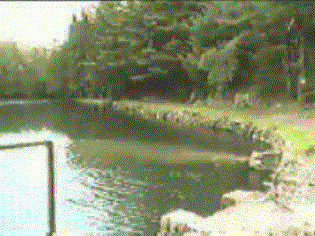Radioactive tracer gas can be inspired into the lungs to allow gamma rays to see details about where fresh air is distributed in the lungs. Due to the motion of the air as you breathe it becomes well mixed in the lungs, which could be thought of as a single chamber. The concentration would be mL tracer/liter.
When a patient ingests a pill, it may be taken up in the stomach and distributed throughout the bloodstream. Therefore taking an aspirin could be thought of as "instantaneous mixing", since it may take only 10 minutes to dissolve and enter the bloodstream, yet it may be present in the blood for several hours.
The concentration of anesthetics in the bloodstream is important in regulating the level of conciousness. In order to "knock someone out," one must administer enough anesthetic to a person. This amount depends on, among other variables, the mass of the anesthetic and the volume of the blood.
New York State laws require that a driver's blood alcohol concentration be below 0.08 percent in order to legally operate a vehicle (other states have similar limits) and concentrations above 0.50 percent can be lethal. For more information on blood alcohol visit the following link.
Environmental Applications
The following picture demonstrates how a pollutant (mass) can enter into a river or lake (the volume). Single chamber mixing is also applicable to emergency spill planning for small well, mixed lakes. Suppose an accidental spill occurs of some dangerous chemical (e.g. a truck or train might crash while passing the lake). The question arises what will the concentration of the chemical in the lake be and is this concentration level harmful to aquatic life. In this instance the maximum concentration at the time of the spill is given by the mass spilled divided by the lake volume. Pollution is commonly measured in parts per billion.

Industrial Applications
When you order a specific color of paint at the hardware store, concentrated color, or pigment, is added to a can of white base paint and mixed together. The resulting color is a measure of the concentration of the pigment in the base white paint.